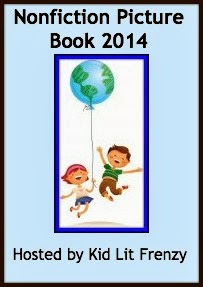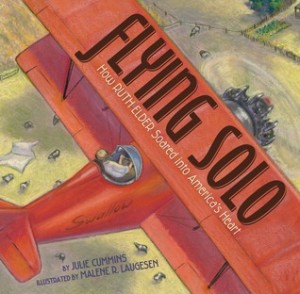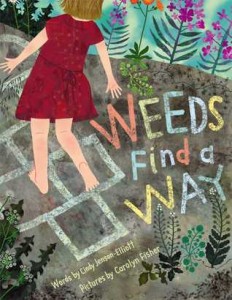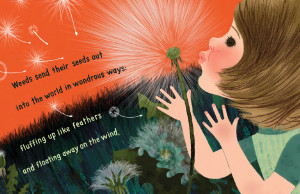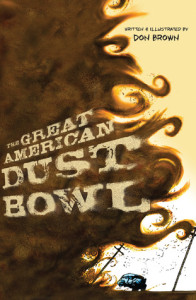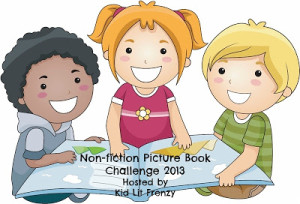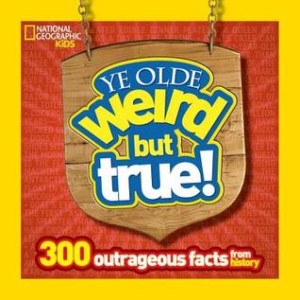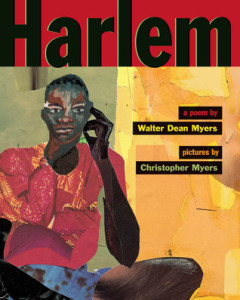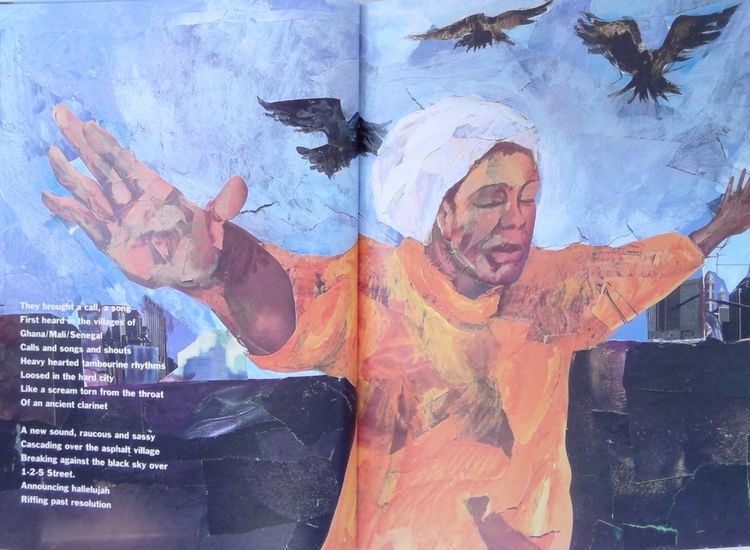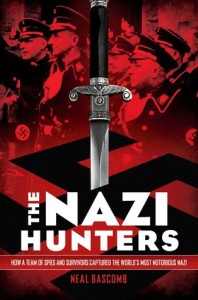Nonfiction Picture Book Wednesday
Nonfiction Picture Book Wednesday is hosted by Kid Lit Frenzy and was started to help promote the reading of nonfiction texts. Most Wednesdays, we will be participating and will review a nonfiction text (though it may not always be a picture book).
Be sure to visit Kid Lit Frenzy and see what other nonfiction books are shared this week!
Flying Solo: How Ruth Elder Soared into America’s Heart
Author: Julie Cummins
Illustrator: Malene R. Laugesen
Published July 23rd, 2013 by Roaring Brook Press
Goodreads Summary: In 1927, airplanes were a thrilling but dangerous novelty. Most people, men and women, believed that a woman belonged in the kitchen and not in a cockpit. One woman, Ruth Elder, set out to prove them wrong by flying across the Atlantic Ocean. Ruth didn’t make it, crashing spectacularly, but she flew right into the spotlight and America’s heart. This is the story of a remarkable woman who chased her dreams with grit and determination, and whose appetite for adventure helped pave the way for future generations of female flyers.
My Review and Teachers’ Tools for Navigation: Ruth Elder joins the group of amazing women who have eye-opening picture books about them and how they changed history. (I love this trend!) More and more brilliant and brave women from history are getting recognition through their story being told. Ruth Elder was America’s sweetheart daredevil, and through her crazy feats showed America that woman were brave too. Although Amelia Earhart beat her in her mission to cross the Atlantic, she never stopped pushing herself and the women around her. I would love to see a unit about amazing women in history that uses the slew of beautiful picture books about these woman. One idea would be splitting up kids into groups, having them each read about one of the picture books, maybe doing some extra research, and then sharing with the other groups what they learned. It’d be a great way to give these women the spotlight they deserve.
Discussion Questions: Although Ruth did not cross the Atlantic, why did she become famous?; Ruth had the chance to be a Hollywood star, but she chose to go back to flying–why would she make this decision? Do you agree with her decision?; How did Ruth and her race help change America’s view of woman pilots?
We Flagged: “On August 18, 1929, Ruth and nineteen other women set out to show that women could fly airplanes just as well as men in the first women’s cross-country air race. The pilots had more than headwinds to counteract. One reporter sputtered, “The only thing worse than dames in planes is dames racing planes!””
Look inside Flying Solo at Amazon
Read This If You Loved: Daredevil by Meghan McCarthy, Amelia Lost by Candace Fleming
Recommended For:
